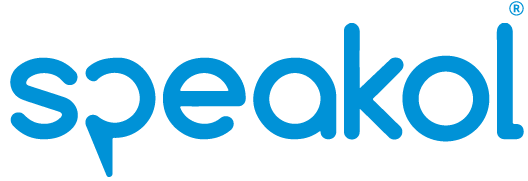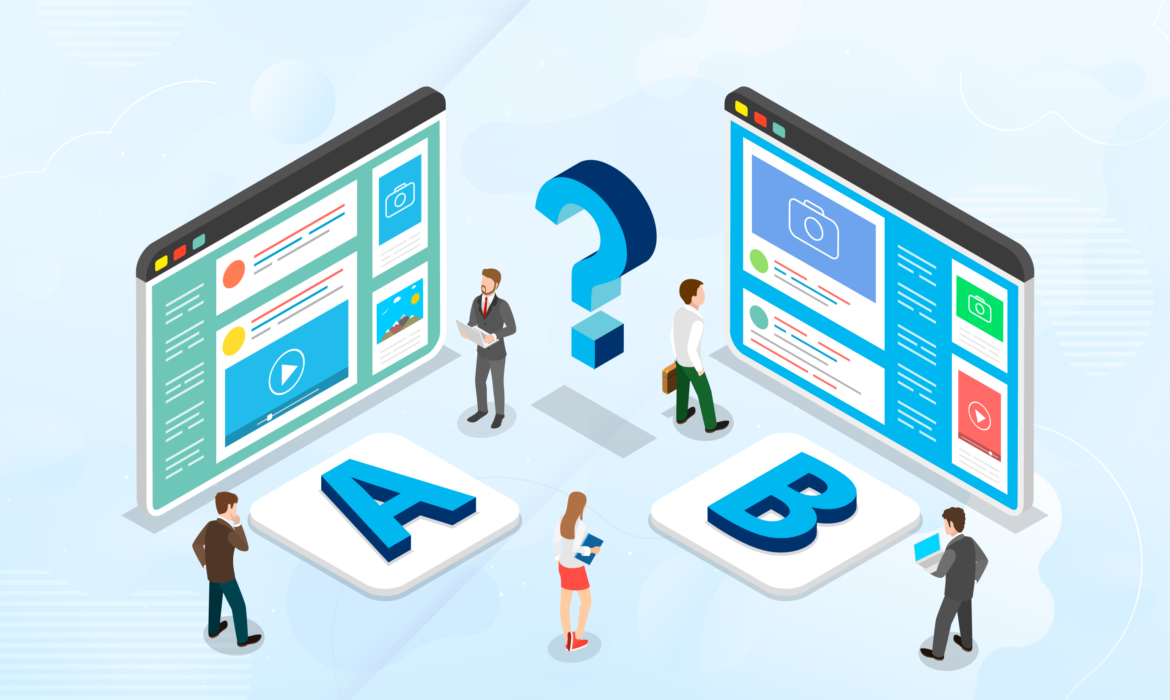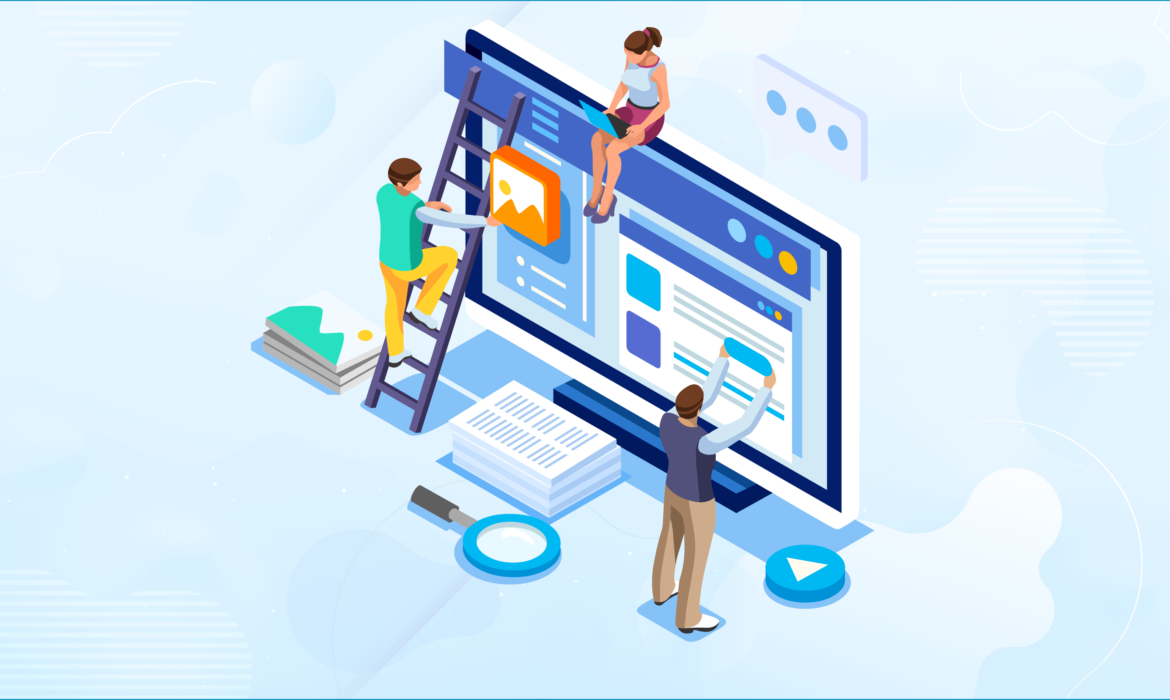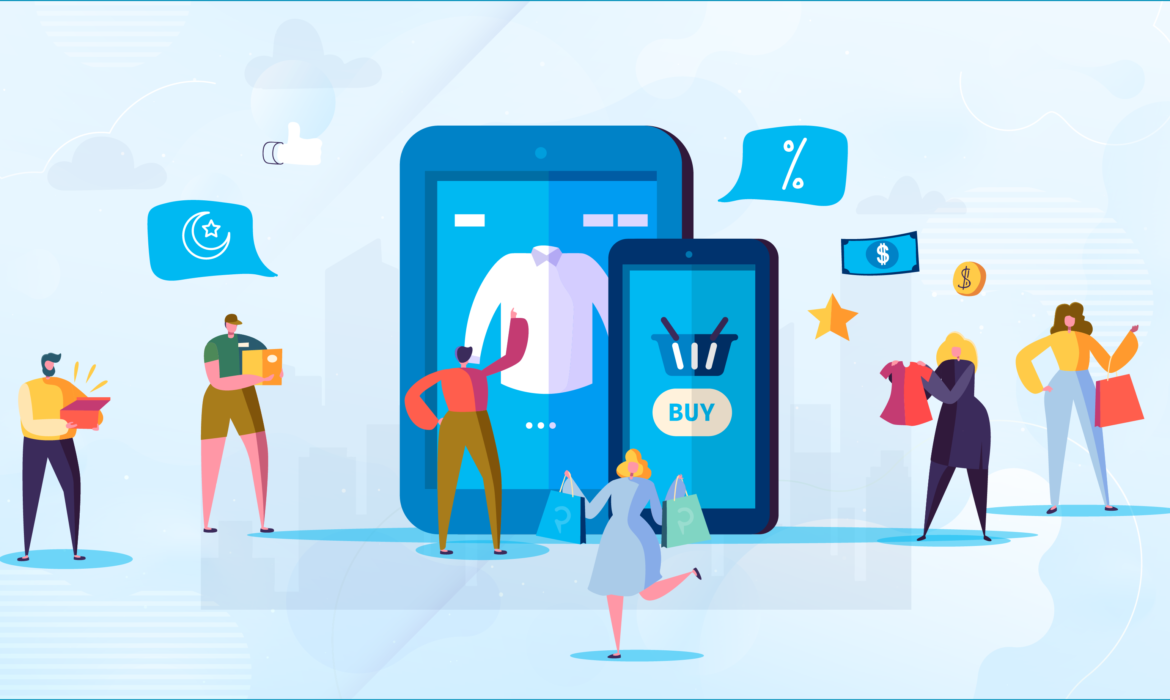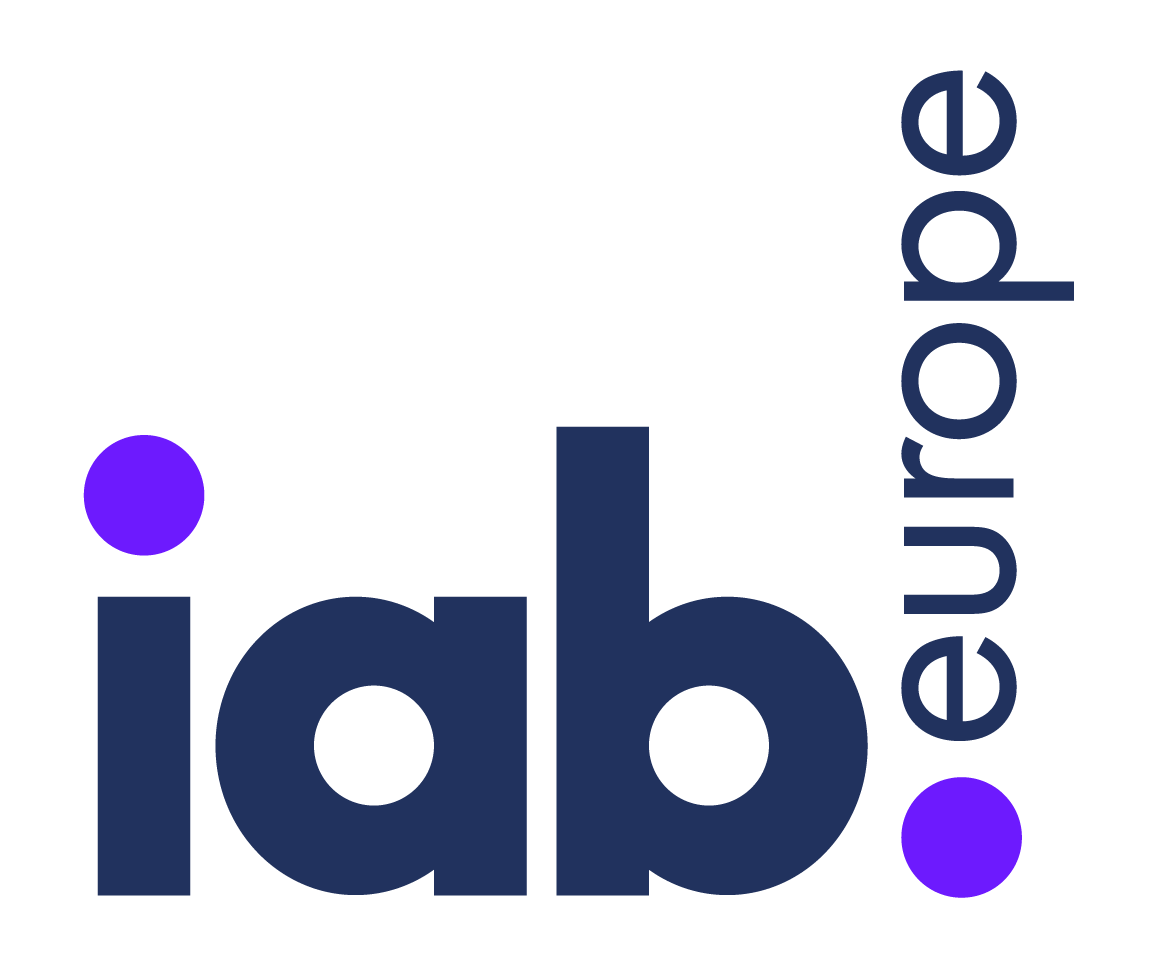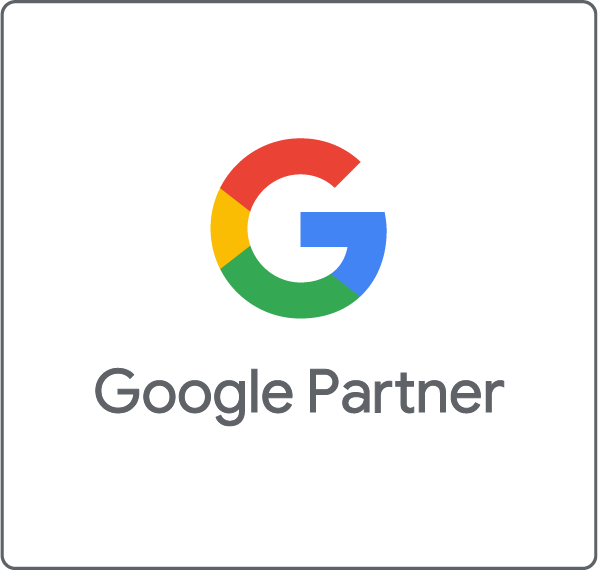A/B Testing

A/B Testing is a means to assess your performance, and consequently boost your sales and conversion rates. A/B Testing is primarily an experiment where two or more variants of a campaign variable are shown to users at random; statistical analysis is employed to determine which variation performs better for a given conversion goal.
Some campaign variables that you can test are titles, thumbnails, and landing pages. After testing different variables and determining the best performing combination of a campaign ad, you can redirect your budget and spend it on the campaign ad that drives the best performance and meets your marketing goals.
How to A/B Test:
- Choose the campaign variable you want to test. We recommend that you test one variable at a time so that you can better assess its performance.
- Create two or more Adsets with different combinations, including the one variable you are testing. For instance, if you are testing three different titles for the same product, we recommend setting up three different Adsets with the exact same settings, including a budget, CPC, targeting options, thumbnails, and landing pages, you simply change the titles.
- Run the adsets for a week or two (7-14 days).
- Using Speakol’s reports, analyze the results of all running adsets.
- Based on the results, you can optimize and choose to run the best-performing combination.
Here is a list of campaign variables you may want to track and assess:
- Titles
- Images
- Landing pages
- Devices
- Location
5 Steps to Create and Optimize Your Landing Page

If your goal is to drive conversion through your Speakol campaigns, you must invest time and effort in creating your landing page.
Landing Pages are where your users are directed once they click on one of your campaign ads. The better the user experience the landing page provides, the smoother it will be for users to navigate the page, find the information they need, and eventually, sign up for a service or purchase a product.
Here are some tips that can help you achieve better results:
Write your Content:
- Inform First, Sell Second:
For first time users visiting your page, you need to clearly introduce your service or showcase your products. Your primary focus should be on communicating with your users rather than drowning them in marketing content; otherwise, you risk losing your potential customers. - Be Precise:
Directly introduce your service or product. Let your visitors know what it is and what its value is. Make a good argument as to why they should register, employ your service, or buy your product.
Design your Page:
- Keep it Brief:
Keep your written content brief ranging from 400-600 words. This is more than enough to introduce your service or product and win over the user without risking any confusion or repetition. - Keep it Simple:
Ensure that your design is simple and engaging. - Make it Readable:
Highlight the headlines. Write short, clear, engaging paragraphs. Ensure that the font you are using is readable. - Choose the Right Image:
Insert an exciting picture that reflects the content either at the beginning or in the middle of your page. Ensure that it does not take up the page’s whole width, so the reader knows there is more content underneath.
User Experience:
- Smartly Add Links:
If there is a need to add a link to an external page, make sure that the new link opens in a new tab or window, so that your user can easily return to your page. - Pop:
Note that users usually close pop up windows before reading them. Therefore, if there is a need to add a pop-up window, make sure that it is triggered after the user is fully engaged with your landing page.
CTA (Call To Action) Do’s and Don’ts
A. Location:
- Around one third down your page, you can add a hyperlinked text in a separate row to encourage people to take action. This is considered a mildly aggressive CTA.
- You can place your primary CTA immediately below the body of your article.
- Do not place your primary CTA on the right rail of your desktop or below share buttons and/or comments; otherwise, there is a risk that users will completely miss the button.
B. Copy
- Tell the user why he/she should take action
- Give the user an incentive to take action. A discount, price quote, or other added value will help motivate the users and increase your conversions.
- Don’t confuse users with multiple actions. Your CTA should focus on one primary action.
- Use precise action-oriented language so that the user knows exactly what to expect once he presses the CTA button. Words like “Buy” and “Sign up” are better than other vague, unclear words.
C. Format:
- Explore creative ways to gamify your action. Use a quiz format, for instance, to motivate the users to follow through and take action.
- Avoid creating the CTA in a banner form. Many times, users completely overlook banners and ignore them altogether.
- Do not add a CTA in the footer. Users will be more likely to miss it.
Tips and Tricks:
- You need to regularly A/B Test major elements on your landing page to ensure that you can achieve the desired conversion rate.
- Experiment with new formats and continue to be creative and innovative. Use videos, photo galleries, games, and other unique content to attract more users.
The Top 3 Mistakes in Your Native Ad Campaign

Native advertising is undoubtedly securing its position as one of the most effective online advertising solutions that countless brands, companies, and startups seek. When optimized and launched effectively, the results speak for themselves.
Native advertising allows you to reach millions of qualified leads, be it Marketing or Sales qualified, who are likely to engage with your ad due to its display on relevant platforms. The more qualified the leads, the higher the likelihood that they would convert into users. With this, it’s not difficult to see a high return on your ad campaign investment.
But like many great solutions, running an effective campaign is a science and an art, whether it’s how you spend your budget, what creative visuals and titles you choose, or the user experience your customer goes through on your landing page. There are always best practices to follow, but even with that, here are 3 of the most common mistakes people make that can easily harm your ads’ potential performance that you’re looking for.
1) Unconcise Or Inaccurate Phrasing.
Don’t use excessively and unnecessary elongated & sophisticated strings of words to form a sentence that should propagate and glorify your product in a manner that you deem appealing to those you want to pay you for your product or service but could be misleading or causing of those potential users to misunderstand or misjudge your business when you can cut it short and keep it sweet.
Remember, users shoot the messenger, who, in this case, happens to be you. Besides the obvious advice of “being creative,” make sure your titles and captions are short, to the point, and is clear on what is exactly you are selling. You’re not writing a blog or a thesis; it’s not even an elevator pitch. Your title should be a one-liner that clearly conveys your product, your goal at the time, and your desired call to action. A bonus note to always make sure you follow is proofreading and making sure your message is written by a fluent speaker taking into account proper grammar and audience dialect.
2) First Impressions Matter.
The most common practice for native advertising is to post a visual of your product or service linked to a landing page containing all the relevant information about your product, a registration/sign up form or CTA, and a contact method. What many advertisers look over, however, is making sure that the visual used for the ad is relevant to the landing page it is linked to.
Many users will click on an ad thinking one thing (based on the visual you chose) and then arrive at a very different reality once they are directed to the landing page. This causes confusion and disorientation, and more likely than not will cause the user to close the page immediately, reporting to you an unnecessary high bounce rate.
3) The Key Word: Optimization
The first draft is always the worst. We have found most people run their ads and leave them on the side, expecting to see returns instantly. However, the biggest factor in the success of your campaigns is to constantly optimize it. What does that mean? It means constant monitoring of the performance, checking the number of qualified leads, assessing how your money is spent, regularly monitoring your cost per lead (CPL), and click-through rate (CTR), and always changing and amending your campaigns based on what insights reveal.
It’s important to always look at your Click Through Rate (CTR), see which ad sets or campaigns need more or less spending, making changes to your landing page as required. Don’t forget, optimization is a process and requires patience, and the key factor is constant testing; it’s based on continuous trial and error and “optimizing” based on your findings. Luckily, advertisers with Speakol gain many insights from our reports and statistics that give them a clear, macro, and micro view of everything. Our Account Managers are always there to help improve your performance and are regularly monitoring your campaign to advise on necessary changes to help you optimize your campaign.
Speakol is the MENA region’s largest platform in native advertising and content discovery, helping advertisers promote their products and services on a premium network of over 500 websites that gain traffic of over 90 million unique monthly views. Our network serves all industries, and we direct your traffic to any country in the world you need, using smart targeting and AI solutions to help you get the most out of your campaigns.
So, looking to grow your business and boost sales? Do you have a product or service you want to capitalize on and sell? Are you trying to reach more qualified leads that would secure a more substantial conversion rate?
How To Create A Successful Ad Campaign

To enhance your campaigns’ performance, you need to constantly review and optimize different metrics in an attempt to make the most out of your campaigns. This will allow you to review and make the appropriate modifications and changes when necessary.
Prepare Your Content Before Launching Your Campaign:
When you set up your campaign, we advise you to read through Speakol’s tips and best practices for writing your titles, designing your thumbnails, and creating your landing pages. These guidelines will make your campaign more userfriendly, engaging, and exciting. By keeping in mind these tips, you will have a better chance of succeeding.
Set Up Your Campaigns for Success:
By following some of our tips and tricks, you have optimized some elements even before you have officially started. Setting up your campaigns for success is vital; it will empower you with the tools and data needed to make smart, well-informed decisions to keep improving and optimizing your campaigns’ performance.
Here are some tips to help you succeed:
1. Create Multiple Campaigns:
- Separate your campaigns by device:
User experience and behaviors tend to differ across devices; therefore, we advise you to create separate campaigns for each device. For instance, it may be more practical to add credit card details to purchase products on desktops rather than mobile devices, and it may be easier to add links to download applications on mobile devices rather than desktops. - Separate your campaigns by location:
Campaign performance may vary according to the difference in locations and market competitiveness. It is better to target audiences based on their locations, which may shed light on their behavior patterns and interests. - Separate your campaigns by-products or content-type:
You need to vary conversion and engagement rates for different products and content. You need to set a flexible strategy to accommodate various products. That is why it is more practical, manageable, and easier to track if you separate products and content accordingly.
2. Set a Budget That Works for You:
Once you launch your campaign, it is vital to have enough liquidity to experiment and gather enough data that can allow you to make informed decisions as to how to proceed. This data will enable you to make modifications that will improve and enhance the performance of your campaign. We do recommend setting a budget that will allow a minimum of $50 a day to spend, at least in the beginning.
At the same time, you need to be cautious and don’t spend your budget too quickly before adequately assessing your campaign’s performance. We do recommend that you begin with a small amount before significantly increasing your budget. This way, you can ensure that your money will be well spent and lead to your campaign’s success.
3. Set a CPC that Works for You:
Set a CPC that allows you to achieve your goals. If your CPC is too low, you may be unable to secure the number of clicks your campaign needs, because a low CPC will allow your campaign ads to be displayed less frequently than others. If your CPC is too high, the clicks will be too expensive, and the return will be too low.
We do recommend that you start with a high CPC to ensure that your campaign items are competitive and are displayed often enough to gather data. Once you have enough clicks to formulate informed optimal decisions, you can adjust your CPC.
4. Don’t Add too many Campaign Ads:
Don’t overwhelm yourself with too many campaign ads. Start with a manageable number until you get the hang of it. You can start adding more campaign ads after assessing the performance and learning more about the platform.
We recommend that you start with one unique destination URL per campaign with one or two adsets with a maximum of ten campaign ads. If you aim to increase your brand awareness, we recommend that you start with 10-20 unique destination URLs per campaign, and around 5-10 campaign ads per destination URL.
Improve the Performance of your Campaign Ads:
1. “Pre Qualify” Your Clicks:
With its unique title and thumbnail, your campaign ad should present what the user will experience once he is directed to your landing page. The user should know what to expect beforehand; otherwise, he might be confused and leave before actively engaging with your landing page. That is why the campaign ad should serve a “sneak peak”. This way, you can drive clicks from genuinely interested users, who are more likely to become customers.
2. Don’t Use Misleading Titles:
Don’t be tempted to use attractive titles that are unrelated to your content. Once the user feels tricked, he will leave your landing page immediately without engaging with it. By creating engaging, descriptive titles, you will ensure to get clicks from interested users.
3. Use Titles with Dynamic Keywords:
Create titles that are specific to some users using keywords that highlight a particular location or device. These titles will eventually generate more clicks and increase user engagement. Learn more about creating dynamic keywords here
Track the Performance of your Campaign:
1. Use the Speakol Conversion Tracking Code:
Speakol has created a conversion tracking code that can help you monitor your campaign’s performance and constantly assess its progress. It displays the level of engagement, conversion, and other valuable insights that will enable you to make informed decisions to optimize your resources and achieve your goals.
2. Use Reports to track Performance:
Reports offer real-time campaign data. This feature allows you to monitor the performance of your campaigns.
Target Highly Engaged Users:
1. Monitor and Adjust your Campaign Targeting Options:
We recommend you start with a broad targeting; then, as you monitor your campaigns’ performance, you can begin to narrow down your targeting options to ensure the success of your campaigns. Once you have enough clicks, you can optimize and readjust your targeting options.
- Create new campaigns with different budgets and bidding strategies for different target groups. This strategy will allow you to know if a particular campaign performs better at certain hours, you can increase your CPC to increase traffic and garner more valuable clicks. If you realize that a campaign is not performing well, you can alter the schedule, or vary the CPC budget. You can also completely discard targeting options that are not driving positive results, and instead, transfer these resources to successful campaigns.
- To optimize your resources, consider these targeting options:
A. Location
B. Device
C. Websites
D. Internet Service Provider
Increase Click Volume:
- Increase your CPC bid:
This will render your campaign ads more competitive on the Speakol network, which will lead to more clicks, and consequently, more leads. - Increase your CTR:
This will render your campaign ads more competitive on the Speakol network, which will lead to more clicks, and consequently, more leads. You can try to increase your CTR by adding title and thumbnail variations. - Add New Campaign Ads:
By adding more campaign ads, you are raising the chances of creating campaign ads that will appeal to different users and prompt them to click. - Widen your Targeting Reach:
Try widening your targeting reach, whether it is by targeting a new location, or devices.
Boost Top Performing Campaign Ads:
1. Speakol’s campaign reports will allow you to examine your campaign ads’ performance and assess which combination of title and thumbnail will generate the highest CTR and engagement as well as CPL.
- CTR: If the CTR of a campaign ad is high, this means that users are clicking on this ad more than others. However, if the CTR is low of a campaign ad, this means that users are not clicking enough on this campaign ad, in this case, we recommend you modify or change it to produce better results.
- Conversion: CTR is important, but the most crucial element is the conversion and engagement rate. The higher the conversion rate, the better your campaign ad will be performing.
- CPL: CPL will let you know whether the clicks your campaign ads are valuable or not, and how they will affect your ROI. You need to ask yourself how much you are willing to pay for the desired action taken on your landing page or website. This is how you can assess whether a campaign ad is successful or not.
2. Pause Low Performing Campaign Ads:
By reviewing the above metrics, you can have a thorough report of your campaign ads’ performance. So if some campaign ads are not performing well, meaning they have a low conversion rate compared to others, you can pause them.
Optimize Campaign Ads:
Campaign ads include elements like titles, thumbnails, and landing pages. The report page will inform you about how your campaign ads are performing. You can allocate more budget to the highest performing ads, and pause the ones who are performing moderately. Assess the performance by considering both conversion and CPL metrics.
How to Create an Effective Digital Marketing Strategy for 2021?

2021 is finally here, which means that it is time to think about new digital marketing trends and strategies. 2020 has witnessed drastic changes in digital marketing during the COVID-19 pandemic, and it seems like many of these changes are here to stay.
So, how can you create an effective digital marketing plan for 2021? Don’t worry; we are here with some ideas that should help you assess your digital marketing strategies and set up new ideas to reach your optimal marketing objectives.
1- Define your Marketing Objectives:
You need to define your marketing goals and specify what you really mean to achieve in the upcoming year. Use the SMART criteria to help you set your goals, for your goals need to be Smart, Measurable, Achievable, Realistic and Timely. In this sense, if you aim to drive traffic to your landing page or website, you should create high-quality content, and if you aim to boost your conversion, you should optimize your resources and invest in SEO to increase targeted users.
2- Assess Your Past Performance:
You should evaluate and assess your past efforts because they will inform your 2021 strategy and budget. By assessing your past digital marketing performance, you can identify the best tactics and strategies and the best channels and platforms. It is important to note that if one strategy or channel has not performed as you had hoped, that does not necessarily mean that you should dispose of it altogether; it means that you may need to revise your approach based on the findings from past actions.
3- Marketing Strategies for 2021:
Brainstorm new ways to use existing and new marketing channels to help you achieve the new year’s goals. Look at the market at large and see what your competitors are doing and where you are lagging. You need to consider whether you have explored all marketing options, including social media and native advertising, and applied all the best practices to ensure the highest results and maximum ROI. Some of 2021’s marketing strategies will include SEO (search engine optimization), blogging, video marketing, conversion optimization, and personalized marketing (especially for e-commerce).
4- Develop a Digital Marketing Budget:
We do recommend that your marketing budget ranges between 7-15% of your total business revenue. Once you settle on your budget, you can distribute it on the various channels and based on the different tactics and strategies you chose to boost your business.
Some of the most popular digital marketing channels that can raise your brand awareness, increase your conversions, and maximize your ROI, include the following:
- Email Marketing
- Pay-Per-Click Advertising (PPC)
- Search Engine Optimization (SEO)
- Native Advertising
- Social Media Marketing (SMM)
- Affiliate Marketing
But how can you split your budget in a way that enables you to achieve your marketing goals? You need to find a good balance, for you don’t want to be a spendthrift, but neither do you want to spend less than it takes for the marketing strategy to be successful. We suggest the following general guidelines:
- Set a reasonable total budget
- Prioritize your objectives and align all your marketing activities.
- Identify your key audiences, and look into their purchase-paths.
- Prioritize the key channels according to ROI and previous experience.
So if you own a new business that wants to scale quickly, you can set a 15% marketing budget. You can divide it between social media to drive awareness, CRMs and marketing management software, content and email marketing to build trust and relationships with your customers, and native advertising to generate leads and secure conversions.
Determining your marketing budget does not only involve deciding on how much money you can afford to spend, but it also involves dividing it up and allocating it to the right channels. Remember that even if your revenue is not very high, you need to spend money to make more money.
Why Native Advertising Matters in 2021?
As Native experts in the MENA region, we can safely tell you that native advertising should be an integral part of your digital marketing strategy. For it is predicted that companies would spend over $52.75 billion on native digital display advertising by the end of 2020 (Source:statista.com).
This number will only grow in 2021 as the pandemic tightens its hold on the economy, and people will spend more time online. Display ads will become less effective the more users are exposed, and native ads will soon be the most reliable vehicle through which brands can get their message across to customers.
How Can You Start?
Don’t hesitate! Join us. Our dedicated account managers will help you grow your business, achieve your marketing goals and see your ROI soar to new heights.
Market Your Brand During the Eid Season 2021

The Eid season is upon us, kicking off three days of celebrations, food banquets, and family gatherings. The Eid marks the end of the Holy Month of Ramadan, a month of fasting, worship, and good deeds. Over the past few decades, the Eid season has become a season of increased shopping and gifting. That is why marketers find themselves under pressure to come up with new igneous marketing ideas and keep up with marketing trends.
What are some of the products that sell well during the Eid season?
- Clothes
Muslim and Arab families always buy new clothes for themselves and their children. It is very common for everyone to dress in new clothes during Eid. - Jewelry
It is not only an accessory but for many, it is also an investment. This makes it a popular gift choice for loved ones during the Eid season. - Beauty and Cosmetics:
There is an increased interest in cosmetics, and beauty and grooming products for men and women, especially as people anticipate eid and look forward to resuming their regular lives after the month of fasting and worship. - Games and Toys:
Games and toys including electronics and online games spike during the eid season. - Travel:
With the interest of resuming old habits, people look into outdoor activities and short trips both locally and abroad.
How can you engage with your audience during this Eid Season?
To engage your audience, your message needs to tell a story, sends a personalized message powered by emotions. Despite the challenges, which are many due to the current pandemic situation and the continuous growth of mobile usage, the possibilities are endless. So get ready to unleashsh your creativity.
Eid presents a perfect opportunity for e-commerce and the food and beverage industries to market their products. Still, all industries and sectors should seize the moment and take advantage of the additional spending during this period.
- Choose Your Message:
Choose the perfect celebratory message for eid. Be authentic and endearing. Create personalized and genuine messages which include eid motifs marking the end of Ramadan. You can include lyrics from famous eid songs, or even come up with your own rhyme for eid. - Offer Something New:
Eid is the perfect season for gifting and shopping. Parents buy gifts and clothes for their children, and siblings, friends, and couples exchange gifts. Therefore, it is the perfect time to offer “Sales”, “Special Discount” or “Limited Time Offer”. Offers and discounts are exciting to use for all industries and businesses no matter what their size is. Prepare a special offer for this special occasion, and promote it in advance using engaging and exciting visuals. - Boost Your Brand Awareness:
Because Eid is a special period, create an Eid-themed marketing campaign to tell the audience about your brand and excite them with the Eid spirit. You can create a customized logo or image.
Contests and Giveaways:
Engage your audience by launching contests and giveaways. It is one of the best ways to promote your business and create a positive vibe; it is also a creative idea to generate leads and increase engagement. This can be a great incentive for users if you are marketing e-commerce, restaurant, or any business.
Seize this time to boost your brand awareness, grow your sales, and maximize your profits.
How Can Your Travel Brand Boost Awareness and Increase Sales with Speakol’s Native Ads this Summer

The outbreak of the COVID-19 pandemic has undeniably changed the world. It had a severe impact on the global economy, but a few sectors have been affected as much as the travel industry. Bookings were down by 95% at the height of the pandemic, as entire nations were ordered to remain in lockdown, airlines went bankrupt, and travel companies and hotels laid off massive amounts of workers.
The prolonged period of lockdown has increased people’s sense of adventure and search for escapism. With new air corridors opening and better testing protocols, and vaccination rollout is finally and thankfully well underway, it seems like the world is starting to get back on its feet. Global research indicates that people have a strong desire to travel, with more than 70% of people planning their next trip. So clearly, travel is beginning to recover in stages – first locally, domestically, and internationally. Still, multiple factors will influence travel, such as social distancing on planes, different entry requirements from country to country, and vaccine rollouts, to name a few.
So after over a year of lockdown, what will travelers look for in planning their next trip??
- Seek out “ecotourism” with minimal impact on the planet.
- Look forward to “wellness-tourism” that will leave people feeling better and relaxed.
- Safely engage with local communities in an attempt to form human connections.
- Look for “workstations” where work can be combined with vacations, especially for longer trips. [the average length of stay has doubled from 5 to 10 nights]
- Opt for “challenging trips” seeking adventure and new local experiences.
- Request travel reassurances that their bookings will be protected if policies and restriction measures change.
The world is experiencing a new kind of travel with the increased number of digital nomads, where people are working remotely with no rush to head back to the office. They also have a new experience-driven travel mentality; after being cooped up in their homes for months, people want to explore new places, cultures, landscapes, cuisines, activities and reconnect with nature.
So if you have a Travel brand or agency that has been idle for a while and want to market your new destinations and activities to users, there is no better time to promote your business than NOW. Remember that 78% of travelers stated that informative content provided by travel brands has influenced their purchase decisions, while 46% claimed that travel ads had the same influence; not only that but 40% of travel bookings are done via phones. Since travelers always check the internet before planning any trip, you should address and target them as they browse their most trusted publishers. You do not have to be an airline or a hotel chain to leverage your brand with native advertising. Native advertising platforms offer an effective way to promote your business regardless of its size.
You need to incorporate Native Advertising in your marketing strategy because it will allow you to:
- Connect you with engaged readers as they read and browse their most trusted publishers online.
- Display non-disruptive ads to interested users, which renders them more likely to engage with your ad.
- Achieve any marketing goal you have, including raising your brand awareness, driving traffic, and increasing conversions.
- Enable you to target users based on their location (region, country, and city), devices, and ISPS.
- Target particular article categories and publishers such as travel websites or sections and articles on premium websites.
- Use the algorithms that build comprehensive interest maps for each user based on their interests and reading history, which means you can reach more qualified users.
- Cross target audience who may be interested in other topics besides travel. For instance, you can promote your trips to Turkey to readers interested in Turkish drama or series.
- Reach readers on their mobile phones. Dedicate ad campaigns targeting mobile phones where 40% of bookings take place.
- Pique readers’ interest by providing relevant, interactive, engaging content using video ads that offer visual engagement and story.
How can you start your Travel Ad Campaign?
- Define the budget you are willing to allocate for native advertising.
- Define your objective clearly because it will affect the type of ad you choose and the action you would like your users to take.
- Register with Speakol, the most prominent native ads platform in the MENA and GCC.
- Once you create an account, a professional, experienced and dedicated account manager will guide you through a thorough onboarding process.
- If you are trying to raise awareness, you can create engaging blog articles and run them as ads using captivating visuals and exciting titles.
- If you are trying to drive conversions, you can create specific landing pages with direct CTAs (call-to-action) to prompt users to take the desired action, including signing up, sharing their emails, registering for a newsletter, or registering for any trip.
Seize the opportunity to reach interested users eager to explore new destinations and activities, using the trendiest marketing channel of our time.
